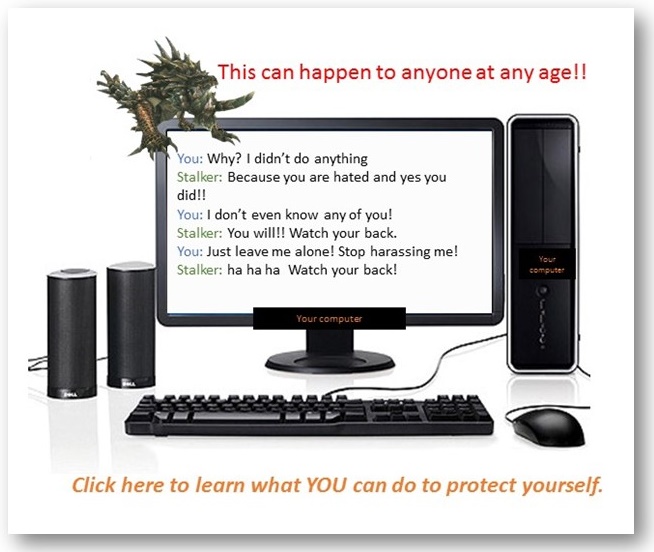cy·ber·stalk·ing
ˈsībərˌstôkiNG/
noun
The repeated use of electronic communications to harass or frighten someone.
Most times with an anonymous name. Anyone at any age can be stalked and harassed.
A lot of those harassed are targeted because they may have posted their opinion on a topic in
a discussion group or social networks. A cyberstalker relies upon the anonymity afforded
by the Internet to allow them to stalk their victim without being detected.
*************************************
Cyberstalking: What Is Cyberstalking and What to Do if You’re a Victim
Or, click here: https://www.callersmart.com/guides/50/Cyberstalking
***********************************************
Another Excellent source for parents: Wired Safety.org
WHOA (Working to Halt Online Abuse),
an online organization dedicated to the cyberstalking problem,
reported that in 2001 58% of cyberstalkers were male and
32% female (presumably in some cases the perpetrator’s
gender is unknown). In a variation known as corporate
cyberstalking, an organization stalks an individual. Corporate
cyberstalking (which is not the same thing as corporate
monitoring of e-mail) is usually initiated by a high-ranking
company official with a grudge, but may be conducted by any
number of employees within the organization. Less frequently,
corporate cyberstalking involves an individual stalking a corporation.
WHOA reported that, in 2001, cyberstalking began with e-mail
messages most often, followed by message boards and forums
messages, and less frequently with chat. In some cases, cyberstalking
develops from a real-world stalking incident and continues over the
Internet. However, cyberstalking is also sometimes followed by
stalking in the physical world, with all its attendant dangers.
According to former U.S. Attorney General Janet Reno,
cyberstalking is often “a prelude to more serious behavior,
including physical violence.” In 1999, a New Hampshire
woman was murdered by the cyberstalker who had threatened
her in e-mail messages and posted on his Web site that he would kill her.
Learn to protect yourself online. Don’t be dumb about it, a lot of creepy people out there..
(great commercial for safety site!)


